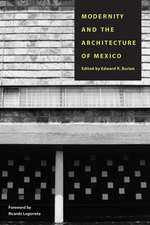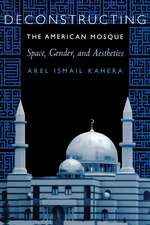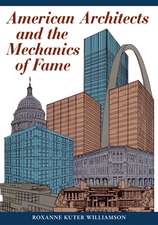Monumentality in Etruscan and Early Roman Architecture: Ideology and Innovation
Editat de Michael L. Thomas, Gretchen E. Meyers Cuvânt după de Ingrid E. M. Edlund-Berryen Limba Engleză Paperback – noi 2012
Delving into the crucial period before the zenith of Imperial Roman building, Monumentality in Etruscan and Early Roman Architecture addresses such questions as, “What factors drove the emergence of scale as a defining element of ancient Italian architecture?” and “How did monumentality arise as a key feature of Roman architecture?” Contributors Elizabeth Colantoni, Anthony Tuck, Nancy A. Winter, P. Gregory Warden, John N. Hopkins, Penelope J. E. Davies, and Ingrid Edlund-Berry reflect on the ways in which ancient Etruscans and Romans utilized the concepts of commemoration, durability, and visibility to achieve monumentality. The editors’ preface and introduction underscore the notion of architectural evolution toward monumentality as being connected to the changing social and political strategies of the ruling elites.
By also considering technical components, this collection emphasizes the development and the ideological significance of Etruscan and early Roman monumentality from a variety of viewpoints and disciplines. The result is a broad range of interpretations celebrating both ancient and modern perspectives.
Preț: 228.81 lei
Nou
Puncte Express: 343
Preț estimativ în valută:
43.80€ • 47.59$ • 36.81£
43.80€ • 47.59$ • 36.81£
Carte tipărită la comandă
Livrare economică 21 aprilie-05 mai
Preluare comenzi: 021 569.72.76
Specificații
ISBN-13: 9780292756816
ISBN-10: 029275681X
Pagini: 200
Dimensiuni: 178 x 254 x 15 mm
Greutate: 0.36 kg
Editura: University of Texas Press
Colecția University of Texas Press
ISBN-10: 029275681X
Pagini: 200
Dimensiuni: 178 x 254 x 15 mm
Greutate: 0.36 kg
Editura: University of Texas Press
Colecția University of Texas Press
Notă biografică
Michael L. Thomas is Director of the recently launched Center for the Study of Ancient Italy at the University of Texas at Austin. He has excavated in Italy for seventeen years, and he currently codirects two archaeological projects there.
Gretchen E. Meyers is Assistant Professor of Classics at Franklin and Marshall College. A scholar of Etruscan archaeology and culture, she has authored articles on architecture, roofing tiles, and textile production and serves as Director of Materials at the Etruscan site of Poggio Colla.
Gretchen E. Meyers is Assistant Professor of Classics at Franklin and Marshall College. A scholar of Etruscan archaeology and culture, she has authored articles on architecture, roofing tiles, and textile production and serves as Director of Materials at the Etruscan site of Poggio Colla.
Cuprins
- Preface (Michael L. Thomas)
- Acknowledgments
- Note on Abbreviations
- 1. Introduction: The Experience of Monumentality in Etruscan and Early Roman Architecture (Gretchen E. Meyers)
- 2. Straw to Stone, Huts to Houses: Transitions in Building Practices and Society in Protohistoric Latium (Elizabeth Colantoni)
- 3. The Performance of Death: Monumentality, Burial Practice, and Community Identity in Central Italy’s Urbanizing Period (Anthony Tuck)
- 4. Monumentalization of the Etruscan Round Moulding in Sixth-Century BCE Central Italy (Nancy A. Winter)
- 5. Monumental Embodiment: Somatic Symbolism and the Tuscan Temple (P. Gregory Warden)
- 6. The Capitoline Temple and the Effects of Monumentality on Roman Temple Design (John N. Hopkins)
- 7. On the Introduction of Stone Entablatures in Republican Temples in Rome (Penelope J. E. Davies)
- Afterword: Reflections (Ingrid E. M. Edlund-Berry)
- About the Contributors
- Index
Recenzii
On relèvera à cet égard que les développements d’E. Colantoni sur les mutations architecturales observées dans le Latium protohistorique et auprès de certaines peuplades américaines et africaines apportent quelques éléments de comparaison inattendus et fort utiles.
Descriere
Experts explore what factors drove the emergence of scale as a defining element in ancient Italian architecture, and how these factors influenced the origins and development of Etruscan and early Roman monumental designs.





